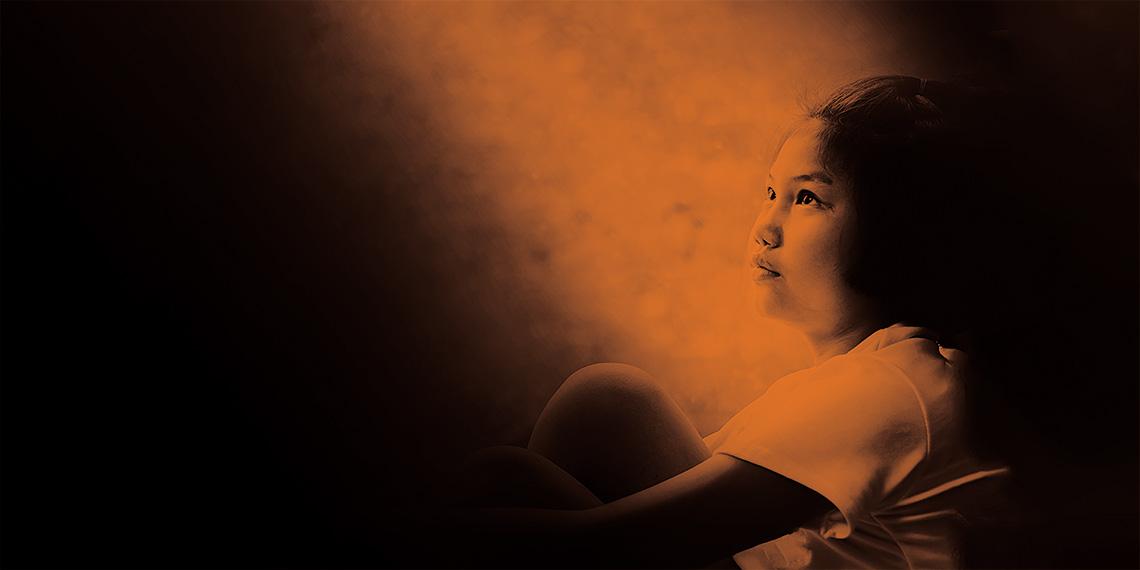You are here
Rescuing Innocence

Since 2011, Child Rescue has sought to protect and liberate children from sexual exploitation and create a better future for their communities. Former International Director of Aftercare Renee Chopping and International Human Resource (HR) Manager Karen Tokorangi speak to War Cry about the organisation’s work in action.
It is estimated that over a million children around the globe are trapped in sexual slavery, and Child Rescue is not willing to stay silent.
The organisation uses its voice to speak for children in its overseas project nations. Its mission is to rescue, restore, protect and empower children at risk of sexual exploitation. Operating internationally as Destiny Rescue, Child Rescue is the name of the New Zealand arm, which communicates and advocates for its volunteers’ areas of work overseas: rescuing children, helping them through trauma rehabilitation programmes and giving them the skills to pave a new way forward—with incredible success rates.
‘We have rescue agents working in different countries and across cultures to actually go in and physically remove people from situations where they shouldn’t be because they’re a minor,’ says New Zealand National Manager Brian Saipe.
‘We know that somewhere around 84 to 85 percent of the girls who come through our programmes do not return to the sex trade.’
Another major facet of the mission is prevention, ensuring these children are not forced into the sex trade from the start.
Aftercare in Action
Renee Chopping was first introduced to Child Rescue through her mother, who worked for an Australian Christian radio station where the organisation was advertising. Renee began to follow their work, and when she finished studying, a position was advertised. ‘I was procrastinating on Facebook,’ Renee laughs, ‘and it popped up, so I thought, Oh, I’ll apply for that and see what happens.’
Child Rescue contacted her within an hour to invite her to an interview. Eight weeks later, she was on a plane to Thailand. Six years on, she was based in South East Asia as International Director of Aftercare, overseeing the organisation’s two rehabilitation programmes.
Child Rescue’s aftercare facilities are designed to provide trauma rehabilitation for girls, so they are partnered with a range of organisations who provide care for other demographics they rescue. The average age is 16, however children as young as seven are currently in their aftercare programmes. ‘They’re all heartbreakingly young … unfortunately, it’s a trend we’re starting to see more of, younger and younger girls coming in.’
Residential Care sees a rescued child enter a home with house parents, a teacher and a case worker, for six months. ‘That’s where we deliver the psychoeducation, which is learning about the physical, mental and spiritual effects of trauma, building emotional resilience and also engaging in forgiveness therapy,’ Renee explains. The girls also complete life-skills training (which can include anything from budgeting to cooking) and are introduced to Christian studies and complete vocational training.
The preferred option is to place a child back with their family and into the 12-month-long Community Care programme, following a rigorous risk assessment. In this programme, the information from residential care is delivered not only to the child, but their family and community as well.
‘We’re seeing attitudes within the community change because of those relationships that we have, so it’s been a huge win for us.’
‘They’re all heartbreakingly young … unfortunately, it’s a trend we’re starting to see more of, younger and younger girls coming in.’
A Human Resource Perspective
New Zealander Karen Tokorangi, Child Rescue’s International HR Manager (who also works on their Prevention Team), was seeking a career change after fifteen years in the same job. After many attempts fell through, and feeling restless in her spirit, she decided to sell up and travel. From there, God placed each step in front of her.
When Child Rescue’s then-National Manager came to speak at her church, Karen offered to visit them and help in any way she could during her travels. Once in Thailand, Karen was blown away by how busy the organisation was. She was told there was a position for her if she wanted it, and knew God was calling her to join them permanently. It was an unexpected answer to her prayer for a career change, but after she talked it through with a friend during a tearful phone conversation, Karen committed to moving to Chiang Rai.
‘I felt like this weight had been lifted, and then from the very next day I started getting excited.’
A major part of Karen’s role is interviewing prospective volunteers. It requires many tough conversations to make sure they have the right people, particularly when choosing their rescue agents. Prospective rescue agents now have to go through a 10-day training course as their final interview process, where they first visit the establishments where these children are enslaved. ‘We’ve had people afterwards go, “actually, this is not for me”, and others where we’ve said, “we just don’t think you’re the right fit”, and it’s good to have that honesty.’
One of the hardest parts is turning away someone who wants to volunteer—particularly if they believe God is calling them to do so. ‘When someone’s saying, “I want to give you something for free”, and we say, “well thank you, but no thank you”, it doesn’t make sense. But there are reasons behind us having to be careful,’ she says. However, there are lightbulb moments when the right person comes forward.
‘You get excited after talking to them, just because they’re on fire as well, and can’t wait to do their bit.’
Karen’s day-to-day responsibilities are constantly evolving. Outside of her principle roles in HR and Prevention, Karen takes a group of girls for Christian Studies once a week and works with Child Rescue’s Team Visits. On these mission visits, they travel to nearby villages to engage with the locals and do everything from painting to teaching English and social media safety. These communities are a constant reminder to Karen of how the children just want to be kids, whether it is during a pyjama party or a water fight.
The Importance of Prayer and Faith
Both Renee and Karen agree that the concept of religion comes naturally to the girls with whom they work.
‘They actually hedge their bets, so they don’t have an issue taking on Christianity, they just don’t drop anything else,’ Karen explains.
‘The concept of there being a god, or millions of gods, isn’t foreign to them, so I think the biggest challenge we have is sharing with them that we believe there’s only one true God,’ Renee agrees.
Prayer is a huge part of this learning. ‘Teaching the girls how to pray is almost like giving them their own emotional resilience tool,’ says Renee, who is particularly moved by seeing the girls praying for each other.
‘If we only taught them that, they would still be better off.’
Every month, Karen and her team print out the names of the children in their global aftercare facilities and pray for them individually. They also pray daily for their volunteers, so that this list of rescued children keeps growing and they can continue demonstrating love in action to the communities they work in. ‘When you’re coming up and you’re installing a water filter or you’re painting the playground for them, and then you sit down and have a meal with them, that’s the difference,’ Karen says. ‘They see something in that and say, “Well, we want more of that”.’
‘Teaching the girls how to pray is almost like giving them their own emotional resilience tool … If we only taught them that, they would still be better off.’
The Chain Effect
Renee is a passionate advocate for online safety and media literacy, having studied extensively the harms of online sexual exploitation, pornography and their effects on children—an issue which ultimately feeds into the countries where Child Rescue are working on the ground. ‘Some people are so oblivious to it,’ she says.
‘I think it hits a nerve for a lot of people, especially in the West; we’re surrounded by this sex-driven culture that affects us in so many different ways.’
She notices that younger generations are far more open to talking about these issues, reflecting how this oversexualised digital culture has been normalised to them. ‘When I say normal, it doesn’t mean it’s right,’ she explains, ‘but it’s everywhere and so this level of content is not new for them.’ Renee runs workshops with parents who are feeling overwhelmed with trying to guide their children through this digital minefield, and she would love to do more work educating young people about negating the risk factors of the online world with media literacy.
‘It’s definitely had to become part of our programmes in trauma rehabilitation … we were noticing even girls that were in our care were still at risk of being sexually exploited while they’re under our own roof, because they didn’t have those skills.’
Changing attitudes is a significant challenge, such as in Thailand, where the bars that supposedly employ these children are known as tourist spots. People believe that by going to these establishments, they are helping these girls financially. ‘Well, no—give the money to us and we will truly help them,’ Karen says.
‘I would love to get, maybe, the airlines on board, [to play] a video or something before people got to Bangkok and say, “This is not what you need to do”.’
Hope Rising Up
While the situation is bleak, there are many tales of hope that emerge from Child Rescue’s work. Renee cites one in particular: a 16-year-old girl in residential care who showed signs of being gifted in hair and beauty. The Child Rescue case workers noticed her talent, and made sure to put her into vocational training, where she ‘flourished’. After working for a local salon for one year, she opened her own shop and was eventually able to build a home for her family.
‘It was an amazing success for us to be able to see her come right the way through and really turn her life around, but what was more amazing for us to see, was that her family could see that she was capable of so much more.’
Stories like this echo Child Rescue’s desire to delve deeper into prevention and helping communities to seek alternative employment pathways for their future generations. ‘Living in poverty, lack of education and lack of job security—are the three main red flags that continue to come up in each family that we’re working with,’ Renee says. ‘It’s just helping them to see people who would take advantage of that and build resilience.’
For Karen, one rescued girl who comes to mind is a young mother on the church worship team. ‘She stands up there and you know when you can just tell someone is so in love with their Lord. She is just beaming and so confident in who she is.
‘She has this little boy … he points up to the stage and honestly, without even saying anything, you know he’s so proud of his mum. And to think, he has no idea just how proud of her he should be.’
| How Can New Zealanders Get Involved? |
|---|
|
Brian Saipe encourages people to pray for the safety of the rescued children, for business partners to offer employment to these girls, for their volunteers, for Child Rescue’s relationships with local churches, and for more donors so they can continue speaking with people and supporting their overseas teams. In New Zealand, churches and high schools can contact Child Rescue to ask them to present on the topics of human slavery and people trafficking. More info | childrescue.org.nz |
